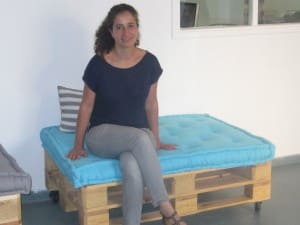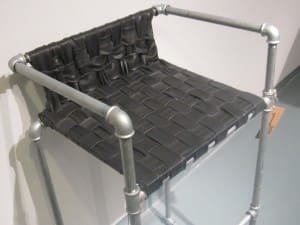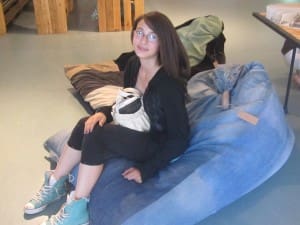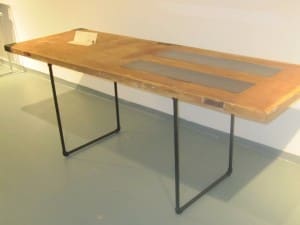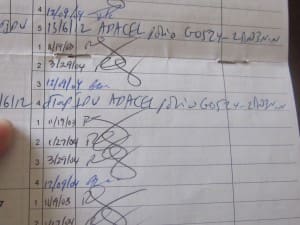I write a lot about international aid to Palestine because, in my view, the international aid system and dependence on it has a lot to do with continued Palestinian oppression.
When I wrote about the recent UNICEF procurement scandal, I was mainly concerned with how donor funds end up in Israel, the entity responsible for the hardship that donor funds purport to ease. Then I read Electronic Intifada’s coverage of the same issue. The anonymous author took a different angle. S/he implied that desalination of Gaza’s water isn’t even the right approach! Although I have no expertise in water, I decided to try to understand it enough to provoke some more constructive discussion using the UNICEF story as an example — but only one of very many — of how messy aid and development are in Palestine.
First question: How did the decision get made to spend an estimated 386 million US dollars to remove salt from Gaza drinking water? UNICEF told me their decision to pursue a 10 million desalination project was in response to a study released by the Palestinian Water Authority. In other words, they say they are responding to local, Palestinian decision-making about how to deal with Gaza’s water problems.
The Palestinian Water Authority kindly shared the truly impressive document, “The Gaza Emergency Technical Assistance Programme (GETAP) on Water Supply to the Gaza Strip, Component 1 – The Comparative Study of Options for an Additional Supply of Water for the Gaza Strip (CSO-G). The Updated Final Report [Report 7 of the CSO-G], 31 July 2011.” (I can email it to you upon request.) It describes the process and outcomes of a rapid planning process in 2011 that resulted in nine interrelated water project proposals. The report describes how all the options were generated, analyzed and categorized based on criteria. A follow-up conversation with David Phillips, the report’s writer, was also enlightening.
After a lot of thought, here’s where I now stand (until convinced otherwise):
First, the report says desalination is urgently needed. But everyone seems to agree that desalination would not be “urgently needed” if it weren’t for Israel’s continuing occupation and blockade and the non-conclusion of the permanent status negotiations about water. If there were no political problem, Gaza and Israel would share water resources fairly, and Gazans wouldn’t be drinking salty, polluted water. So, the desalination option accommodates Israel’s siege — it is a bandage that does not address the root causes of the problem.
Moreover, desalinating water, while alleviating suffering of Palestinians, would also reduce pressure on Israel to comply with customary international water law and International Humanitarian Law. In fact, this is a major reason it was rejected, up till now, by Palestinians and why Israel has supported the desalination option. For these reasons, desalination is a politically costly option, and one that should only be pursued in the context of broad public input. Has there been broad public input? Not according to critics of the decision.
Second, large-scale desalination isn’t possible without guaranteed, uninterrupted energy, which doesn’t exist in Gaza (due to the Israeli siege). Therefore, the feasibility of the large-scale desalination option relies on costly, short-term “fixes” (e.g., generators) that may or may not be allowed in to Gaza by Israel. In the context of the Israeli siege on Gaza and Israel’s repeated destruction of Gazan infrastructure (including the donor-funded airport, power plant, schools, etc.), the desalination option is of questionable feasibility.
Third, there are many parties involved that have pre-existing interests in desalination and privatized approaches to water, including France, Israel and possibly Spain, making their support for desalination in Gaza a potential conflict of interest. Enhanced scrutiny to ensure integrity of all actors is critical.
Fourth, there is a dangerous pattern of inaction (or ineffective action) followed by a crisis, which is then used as an excuse for poor process. In the case of the final report that is now being used as the defining Palestinian policy document, it was an initiative of the consultant! The consultant approached Norway, and Norway funded it. The “opportunity” was offered to the Palestinian Authority. No matter how common this process is, it’s bad process and contradicts international best practices in local ownership of development. (I am completely impressed with the quality of the consultant’s work, but this doesn’t excuse the process.) Please note this: this pattern of crisis creation is built in to the “humanitarian” response system that claims to maintain credibility by staying out of politics. Humanitarian actors (who are funded, let’s be honest, by political interests, may see an impending problem, but they don’t get really involved until it’s gotten so bad that it’s a humanitarian crisis. Then, because there is a “crisis” there is justification for less local control, fast decision-making, and over-spending on “alleviation,” rather than a genuine political effort to resolve the underlying injustice.
Fifth, there is a serious distortion of the concept of “consensus.” In this case, as in all others I’ve studied, the internationals consider the Palestinian Authority as proxy for public support. But given that the PA has neither de jure nor de facto jurisdiction, and given that the PA was installed and is maintained by donors, and given that there are few if any real accountability mechanisms that people can use in relation to the PA, is the international position credible? In this case, like most others, it is hard to imagine there was very much of a local consensus process, when the final report isn’t even available in Arabic.
Sixth, I was pleased when the report identified the first screening criterion as “political” but disappointed when they elaborated it to mean: “Is this option available/feasible in the current political environment?” This is the HEART of the problem with humanitarian aid—they continue to put feasibility above rights. This makes humanitarian response complicit. If we desalinate because fair and legal sharing of resources isn’t acceptable to Israel, then we are enabling the current situation. No, not just enabling it, we are funding it! In fact, this report, like nearly all the other “technical” documents, identifies the problem as political but is not willing to focus their analysis and strategy on achieving a political solution. (But don’t we need a plan to follow when the political solutions fail, you ask? Yes, in theory, but when the political solutions fail for 64 years, then you have to ask if compromise isn’t part of the problem.)
Consider this: The report says, “The principles of customary international water law – which bind all States, whether or not they have signed specific conventions – support a case that the Gaza population should receive a much higher volume of fresh water from the resources shared with Israel. Unfortunately, however, no progress has been made in the negotiation arena on this matter, to date.” (p. 18) But does the report suggest specific ways to hold Israel accountable for its non-compliance with international customary water law? It does NOT!
And consider this circular logic that seems embedded in the report (and in the whole aid system): “We threw out the best option of fair allocation because it wasn’t feasible, so we’re instead accepting the desalination option (which was rejected in the past because it compromises our negotiating position), which relies on materials, parts and electricity that Israel may or may not allow into Gaza, which means that it too isn’t feasible.”
Where is the end to this craziness?
